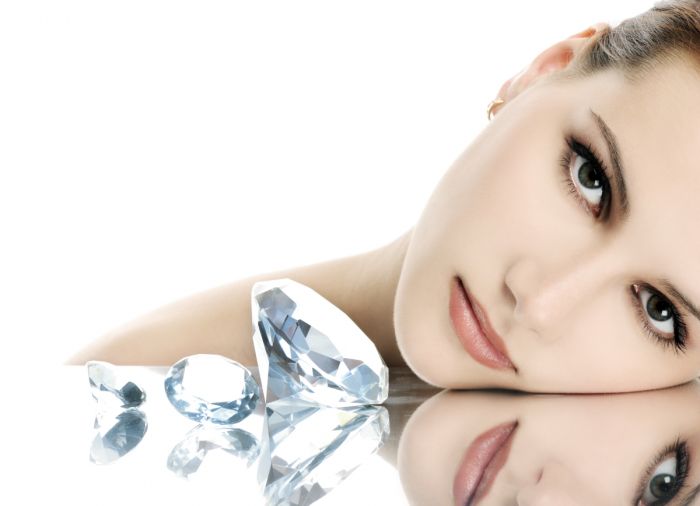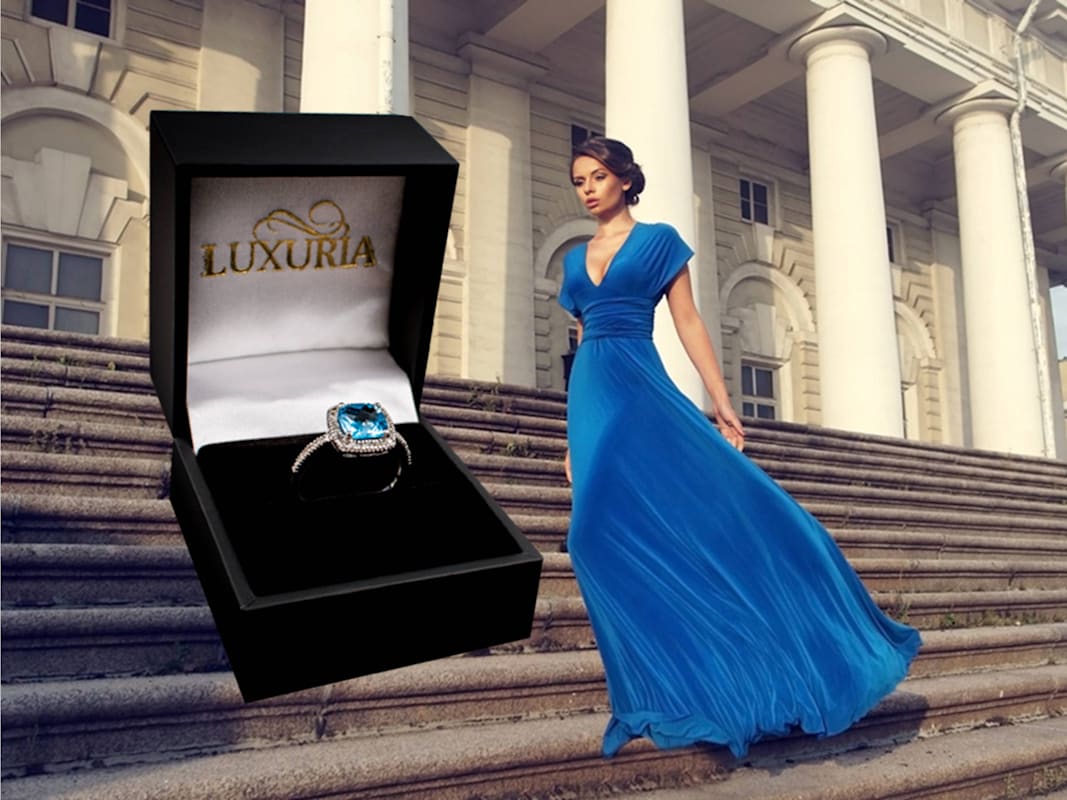
Diamonds are beautiful and regarded as one of the most expensive gemstones due to their brilliant shine. Although often described as “a girl’s best friend”, there has been a steady shift to more economically and environmentally friendly stones.
These substitutes offer quality and brilliance at a fraction of the price of diamonds. For this article’s purpose we will not be looking at lab created diamonds as they are still technically considered diamonds, but instead focusing on other gemstones who can resemble a diamond. The following gemstones are Enji’s top 5 diamond substitutes.
One of the main reasons why people buy diamonds is due to gemstones durability and shine. Diamonds have a 10/10 on Moh’s scale of hardness (a geological scale used to measure a gemstone's resistance to scratches) and has a refract index (scale of how light travels through objects) of 2.42. These are all important to note as our list takes both into consideration.

Goshenite
Goshenite is part of the beryl group of minerals, which include emeralds and aquamarine. This little gemstone also has a rich history of being used as a diamond alternative before the rise of synthetic diamonds
Due to its durability it is usually considered as a great alternative to diamonds. Ranging from a 7.5 - 8/10 on the scale of harness it is scratch resistant but was found to be brittle and sensitive to pressure. This means that although it will resist some scratches, it should be stored away from other jewelry to prevent damages and should avoid physical activities that could result in a direct contact with the stone.
Because Goshenite is the purest form of beryl it will have a clear and beautiful shine. Its refract index is 1.562 to 1.602, which is 1.5 times less than that of a diamond. Although it will not sparkle as much as, it will be beautiful enough to not to arise suspicion when properly cared for. This means that it will require regular cleaning with soap and water as well as a professional polish when it starts to dull.
White Topaz
Topaz is a beautiful alternative to a diamond. Although it traditionally comes in a yellow hue, topaz can also have an array of colors including colorless, also known as white topaz. This stone has a strong resemblance to a diamond and is admired for its beauty. But, there are some drawbacks to this gemstone.
Topaz has an 8/10 on Moh’s scale of hardness, this means that although durable, topaz it is more prone to scratches and clouding than a diamond. This means that while diamonds do get dirty, mild soapy water is all that is needed to bring back it’s brilliance. Topaz on the other hand will require a professional buffing and shining every couple of years if you want it to be as brilliant as a diamond. Topaz also has a 1.64 which means that it will not reflect light as brightly as a diamond.

Cubic Zirconia
This stone has always endured some mockery from films simply because it is seen as a “fake diamond” but its infamy shouldn’t stop you from considering this alternative. Cubic Zirconia is created in labs and therefore cost less than diamonds.
One of the reasons it gained a spot at number 3 instead of 2 is because of its durability. Impressively it does range from an 8 to an 8.5/10 on the hardness scale. This is equivalent to most precious stones such as emeralds or topaz. But it does leave this diamond alternative susceptible to collecting scratches and dulling over long periods of time. However, it makes a strong come back with its shine.
Cubic Zirconia has a refract index of 2.18 which is one of the closest to the diamonds brilliant 2.42. Therefore it is often confused with a diamond by the naked eye. But this defining feature also has a little downside. Lacking the diamond's imperfections such as inclusions and sometimes yellow tone, cubic zirconia is considered too perfect to be a diamond.
White sapphire
Sapphires are known for their vibrant blue hues and stunning use in wedding rings. A white sapphire is a great choice if you are looking to have a traditional diamond look. They are a little more expensive due to the sapphires popularity but are still significantly cheaper than a diamond.
Sapphire has an impressive score of 9/10 on Mohs scale of hardness. This impressive number earned it its spot as number two. You still have to be cautious when wearing this gemstone but should last you for years to come with proper care. A white sapphire makes a great alternative for a wedding ring.
The sapphire's durability did come at a small compromise. The refract index for sapphire is usually between 1.766 - 1.77 which is lower than cubic zirconia but still holds a stunning shine. Even if sapphire is not as refractive as a diamond when cut correctly it will leave its audience in awe.
Moissanite
Moissanite has earned its spot as number one with the best overall numbers and prices. This gemstone is naturally occurring, but extremely rare, silicon carbide. It wasn’t until the 90’s that scientists were able to recreate this mineral and grow it into moissanite. It was never created for replacing a diamond, but rather to have its own properties and characteristics.
If you are looking for a gemstone that can withhold the test of time, moissanite comes as close as can be. With an impressive 9.5/10 on the scale of hardness, Luxuria fake diamond rings are one of the top picks for wedding rings. It beats naturally occurring gemstone and comes as close to a diamond as any gem can.
The main reason moissanite earned its top spot in this list is that it has an astonishing refract index of 2.65 -2.97. Yes, you read that correctly. Moissanite has a better brilliance than a diamond. The reason? This gemstone was made with the purpose of being better than a diamond and it comes close if I do say so myself. It also is understood that this gemstone still goes for less than a diamond.









